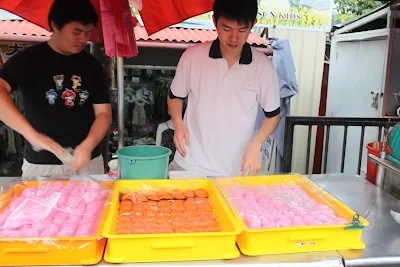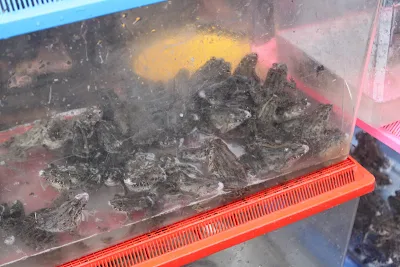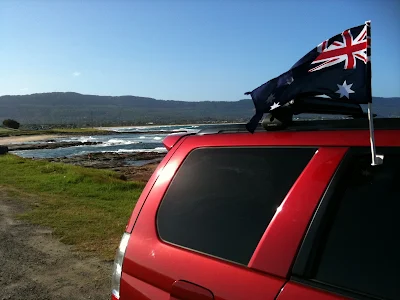Air Itam (Indonesian or Malay literally for 'Black Water") is nestled below the central spine hills of Penang island, at the north-west corner of the Malaysian Peninsular and lying between Phuket and Pangkor Isles.
A densely populated suburb not far from Penang's capital city of Georgetown, Air Itam is also the site of the Kek Lok Si, one of the largest Buddhist temple and monastery complexes in Asia. Just below this complex is one of the most lively market conurbations in Malaysia - and when you visit in the early hours after dawn, you are treated to a lively spectacle swirling with people, produce and practicality.
Penangites love their easily accessible snacks, with traditional Straits Chinese cakes (or kueh) above, made fresh each day and very affordable in costs, leading the popular choice. Left to right, steamed and airy light huat kueh in pink and the ang ku (or literally, the red tortoise) in the centre tray. Each bright red coloured ang ku sits on a small piece of banana leaf and is both savoury and sweet in taste, being made of cooked yellow bean paste and wrapped inside dough.
Like in any Italian pasta, Shanghai mien or Osaka ramen outlet, the making of fresh noodles, in this case egg noodles in Air Itam, constitutes a labour of passion and attention. White flour permeates, cutting of the dough is precise and fingers are flexible to add to the flurry of activity.
Patterns and designs from a paper lantern (above) and below, the Malaysian cousin to the Queensland paw paw. Both were on open display as you stroll past the myriad of sights, sounds and items on sale.
Below, a scene comparable to dunking doughnuts. The crisp and freshly made dough-based deep fried stick (yau chiow kuai in Cantonese) is given a soak of thick black coffee. This is a particularly popular practice at breakfast time at various street corners and coffee shops in places like Thailand, Vietnam and Hong Kong.
An ubiquitous snack (above) is the light weight apong, or pancake, swerved flat or in rolls. They have to be eaten fresh and preferably with fingers.
Typical of any south-east Asian market, those in Air Itam have both essential ingredients like dried shrimps (above) and startling offers like live frogs on display (below).
The entrance to another market in Air Itam (above) can lead to eye openers and organic produce (below).













































